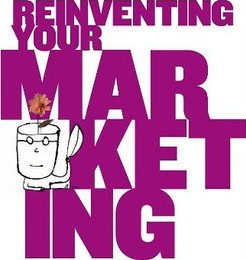Publisher” Harvard Business Review Press
Book Review by: Nano Khilnani
This book is part of a series of collections of articles previously published in the Harvard Business Review.
The articles in this work touch upon various aspects of marketing, reflecting thoughts of various experts on the subject that provide you ideas, strategies and plans to make your marketing efforts more fruitful.
Among the articles are Rethinking Marketing by Roland T. Rust, Christine Moorman and Gaurav Bhalla. In it, the authors point out that mass marketing, which has been practiced for decades, has now been replaced by developing customer relationships. They write that customers now provide input as to not only what makes them buy your product but also how it can be improved to make their experience with your product richer.
In other words, the days of one-way communication are now almost over, and they have been supplanted by two-way, interactive and interpersonal communication.
In Unleashing the Power of Marketing, Beth Comstock, Ranjay Gulati and Stephen Liguori point out the example of how General Electric realized that it could no longer be successful simply by launching increasingly sophisticated technologies. To succeed, the company needed “a marketing engine that could collaborate directly with customers and lead to new markets.”
With an initiative emanating from the top in the person of CEO Jeff Immelt, its marketing teams developed a new framework for the entire company based on three essential components: principles, people and processes.
In Marketing Myopia Theodore Levitt opens our minds to the idea that in order for our business to keep growing, we must know what business we really are in, not on the basis of what products we sell or services we provide, but based on what needs we satisfy of our customers.
He points out as an example that the railroad business stopped growing at some point not because people no longer needed transportation. It stopped growing because other means of transportation took away part of its business: airplanes, buses and cars. If they owners of railroad companies had identified a customer need, focused on it and satisfied it, they would have continued growing.
For example, traveling on the railroad and seeing the country and its attractions, as a form of vacation, as opposed to the need of other customers to get somewhere fast for business, where the airplanes fill this need best.
Another interesting article in this book from the Harvard Business Review is Female Economy, written by Michael J. Silverstein and Kate Sayre. They start by declaring boldly that “women now drive the world economy.
Globally, they control about $20 trillion in annual consumer spending, and that figure could climb as high as $28 trillion in 28 years. Their 413 trillion in total yearly earnings could reach $18 trillion in the same period.” The total world gross domestic product now being about $50 trillion, the $20 trillion spending that women have control over is about 40 percent.
Despite the mammoth “female economy” most companies still continue to do a poor job of marketing to women. But there is hope. Companies that do their homework succeed. The authors point out the results derived from a large study of around 12,000 women done by Boston Consulting Group which yielded a wealth of data on women’s buying habits. It found that the largest potential lies in six industries: apparel, beauty, food, financial services, fitness and health care.
They cite Curves, the fitness center company as model of success in best understanding women and fulfilling their unique needs. It has enjoyed rapid growth because it understood that time-pressed women need quick and affordable workouts.







